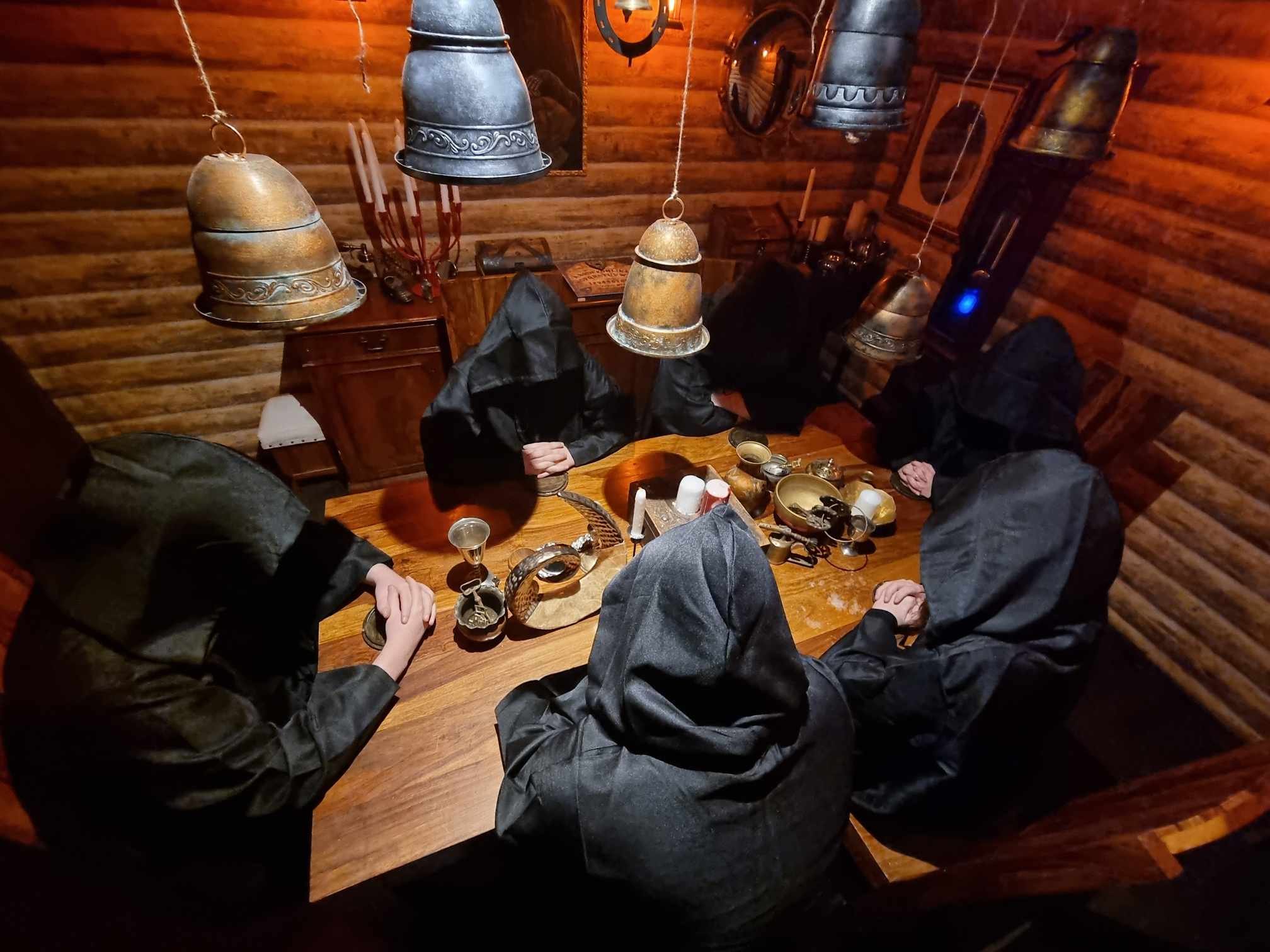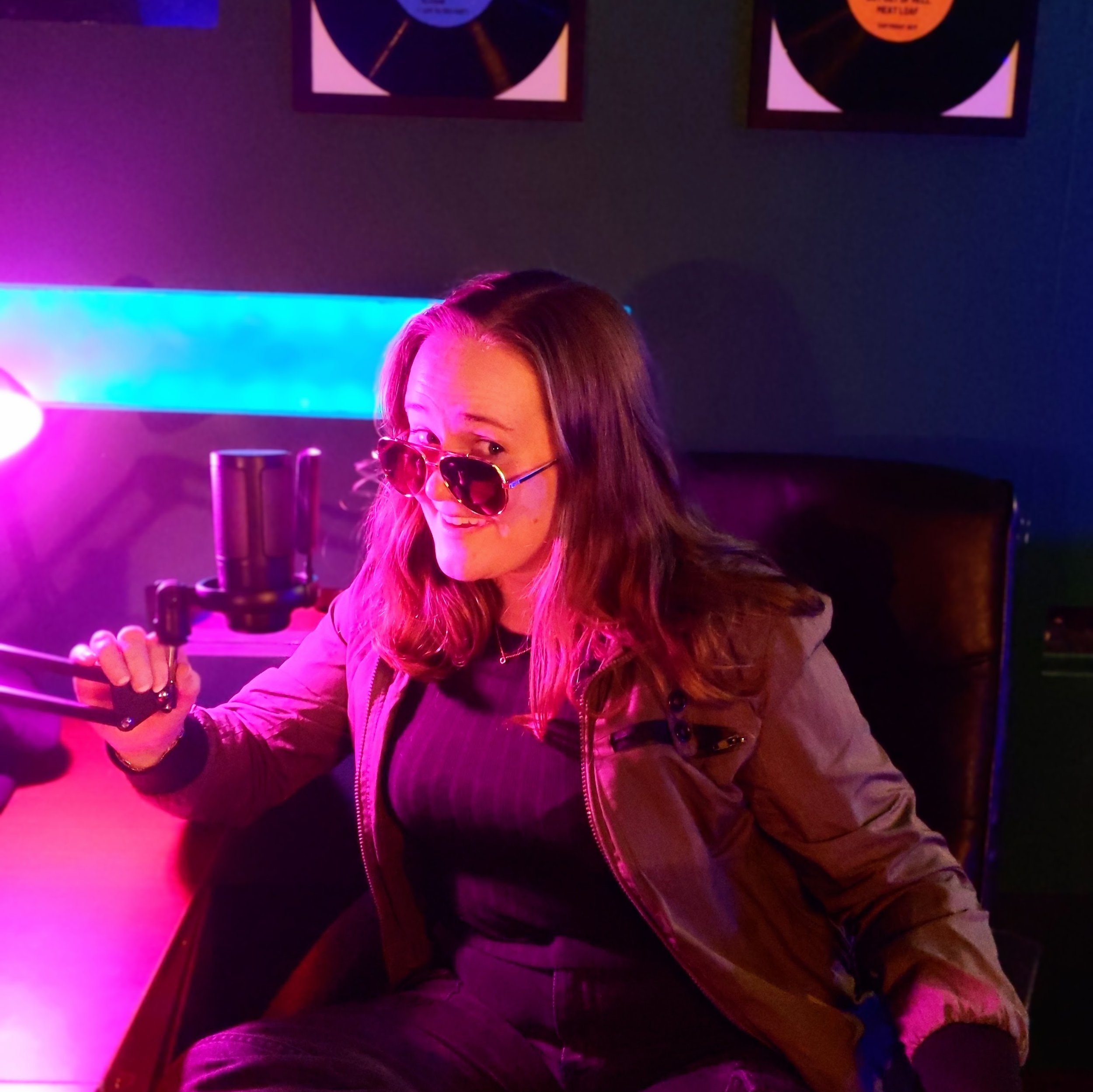Escape Rooms or: How I Learned to Stop Worrying and Love the Roleplay
Oran Talbot - May 2024
One of my favourite escape room memories is sitting around a table. It wasn’t any particular kind of table. The table wasn’t even really special, besides a few boxes with objects inside and some pressure plates, used 20 minutes of game-time earlier. But we had been given a table, and we were damn well going to use it. Because there is a difference between what a designer has put in the space to serve a purely mechanical function - a game mechanism, something to solve or serve a puzzle - and what they’ve put in there for play. And play with that table we did - we assigned ourselves roles, sat according to a seating chart, and had a round of rousing moral debate as to the predicament we had found ourselves in - all in character of course. Some cultists sat around the table in question. Shoutout to Ritual at Escape Reality Edinburgh!
It can be very easy, as soon as the Gamesmaster steps away, to forget who you’re supposed to be while you’re in the room. You’re a cop, you’re a detective, you’re a ghost hunter, you’re a pilot. It can vary from room to room how much the room seems to remember that you’re these things, too. The solution to this can be 50/50 - 50% learning to pick up when a designer wants you to play, and 50% learning how to make your own fun. If you’re a puzzle hound, someone more concerned with beating records and getting on leaderboards, this probably isn’t the strategy for you. But if you want to squeeze the most entertainment out of your allotted game time, I find a playful approach to be far more enjoyable. As a skill, finding where space has been left for play is not dissimilar to knowing how a puzzle might flow. A good designer should be able to craft something that just feels right. In the same way it should be obvious what lock a key goes in without being directly told, a playful mechanism will have carved out its own space in a way that feels deliberate. Sometimes it’s easier to notice if you think like a game designer - Take the aforementioned table and chairs. The room they were in wasn’t massive, but the table took up so much space within it. I knew any team of designers would have had a back and forth about the space - It would’ve been much easier to have a smaller table, and be able to fit more people into the room. But they didn’t, which I took to mean that the designer believed the table’s presence to be integral to the feeling of the room. And why include so many chairs, if they weren’t meant to be sat in. This of course may be a case of me reading too much into a room - I have no idea what the designer was thinking, only how I would be thinking if I were to design the room. But that’s the other 50% - The learning to make your own fun.
In another room, before entering, my team and I were all assigned “roles” - This is a common enough theme in escape rooms, but one I’ve rarely seen actually turn out to mean anything beyond some pre-game patter. This room was the same, but we decided to take our roles extremely seriously. If we felt a puzzle didn’t fit our pre-assigned role, we handed it off to someone else with a more appropriate title. What, you expect me to be able to read medical records? I’m the ship’s engineer, give that to the doctor! It ended up making the room feel more alive, like we were really playing out a scenario, and not just doing puzzles. This was especially true at the finale, where we quickly realised a time-sensitive puzzle only had four inputs, and we were a five person team. Our Captain knew what to do, letting everyone else stand to their station while he fired off commands, living out his role as our fearless leader. This embrace of the roles meant that we were looking at the room from a different angle than perhaps anticipated, but meant we actually had more to do, such as giving our Captain a job rather than just having someone stand to the side while the rest had fun. Crew on a spaceship, roles on a detective team, members of the Olympic anti-doping committee…? All fun roles we’ve seen given to players!
In Radio Nowhere, we try to give players a choice - Do you want to chase as many of the puzzle threads as possible, or do you want to throw yourself into the roleplay, construct radio interview segments and introduce your favourite songs, in hopes of getting a call-in from a fan, tipping you off on plot-related information? Not everyone will feel comfortable putting on a radio persona and letting their own charisma drive the gameflow, and equally, not everyone will want to scour databases for details. In the end, both play styles should be rewarded equally - escape rooms should be a place to have fun, not a test of who fits a specific criteria of “smarter”. And this is something that needs to be consciously added. Sure, some players will take the theme of the room and run with it, but most people will need to be given some toys. Create a space that’s fun to just be in, even when you’re not solving puzzles. The table didn’t need to be there, but it was. Some rooms have hats or lab coats that you can wear, not because they serve the game, but because it makes sense for them to be in the space, and because everyone likes wearing a lab coat. Sometimes it can be hard to include elements that aren’t crucial for fear of creating a red herring, but it’s okay if some aspects of a room are just “isn’t this thing cool?”With Radio Nowhere, you get out of it what you put into it. Be silly, and the game will be silly right back.
Crafting a believable room means players can roleplay that they’re using the space in the way it was actually used in the narrative. It should also remind players of who they’re supposed to be. We took the initiative to fulfil our roles on the spaceship, but what kind of fun could we have had if those roles genuinely impacted our gameplay in a designed way? It can be hard to design something that feels like it gives specific players highlighting moments, rather than cutting off opportunities from others, but I’m confident it can be done as long as it’s well-embedded into the room’s lore and briefing.
At the end of the day, all players are paying customers. It’s not our job to decide whether they’ve “earned” having fun - In my experience, the best games are the ones where you could fail to escape, and still have had a full experience exploring the space and seeing how it reacts to you. Sometimes intellectualism holds back immersion, and while players likely want to feel challenged, they shouldn’t leave feeling like they had a bad time because they were “too stupid” to solve the puzzles laid out before them. You should be able to play in the space without winning, even if that takes a little willingness on the player’s behalf to get silly with it and see what they could do, rather than just what they’re instructed to. You’re not writing a test, you’re creating an experience, and it should strive to always be a good one. A really good room makes them one in the same, but sometimes you just need a little less puzzle, and a little more roleplay.


